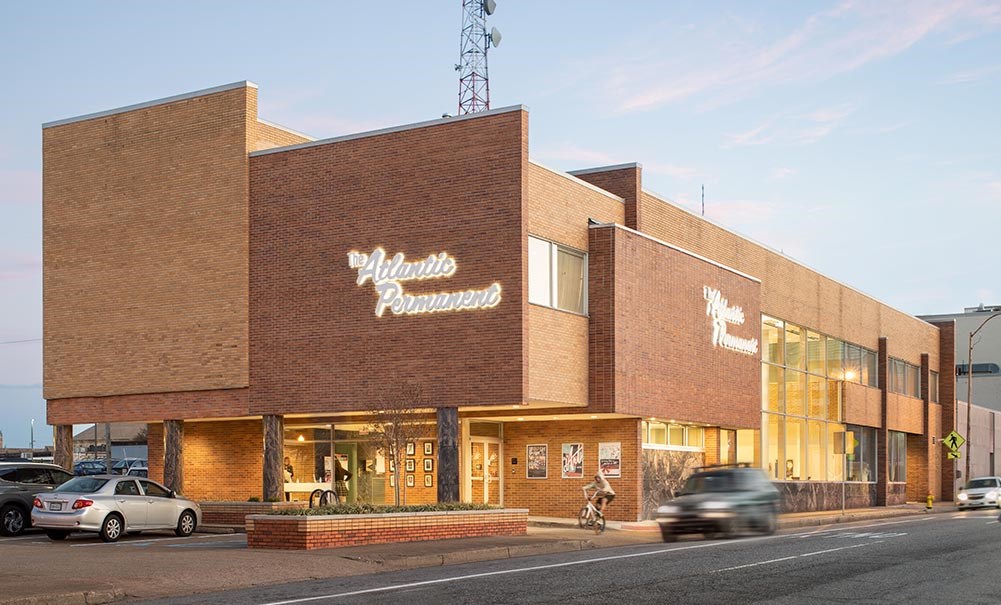Last updated: September 24, 2024
Article
Case Study: Atlantic Permanent Building, Norfolk, Virginia

Yuzhu Zheng
Climate adaptation I Flood resilience I Community art space
Sophisticated, modern in style, and convenient are the descriptors used for the rehabilitated Atlantic Permanent Apartments and D’Art Center in Norfolk, Virginia, illustrative words that equally applied when the former Atlantic Permanent Bank headquarters building was erected in 1954. Beyond preserving the sleek lines of Norfolk’s only International Style building, this rehabilitaton introduced another timely title: floodproof.
The Atlantic Permanent Building is located in Norfolk’s Art District, the Auto Row Historic District, and within walking distance to downtown restaurants and entertainment. It’s also at the center of a dizzying array of flood risk factors. The combination of Norfolk’s sinking terra firma (much of it infill), high water table, and stormwater runoff, intensifies the fact that the building sits adjacent to the lowest point in the area. Floodplain regulations for Norfolk mandate elevation and floodproofing for substantial improvements to buildings, but it did not make sense to raise the Atlantic Permanent by six feet, out of the flood plain and coastal flood hazard levels.
With creative ingenuity the rehabilitation team recommended a combined approach of dry floodproofing and wet floodproofing that would be make the building more resilient and preserve character-defining features like the large historic glass panels at the entrance along Boush Street and the horizontal emphasis of the massing. The plan included installing shatterproof glass and using moisture-resistant gypsum with fiberglass meant to impede mold growth on the interior walls. The building’s entrances could be blocked by manually inserted flood barriers — aluminum panels set into steel channels meant for low level nuisance flooding — and two sump pumps would remove excess water on the interior if a heavy flood event occurred. This floodproofing allows the interior to survive inundation of up to six feet above the finished floor.
The electric and mechanical equipment on the first floor required the dry floodproof approach. The elevator shaft and equipment room were made impenetrable to water by using waterproof membranes and sealants on structurally reinforced concrete walls and slabs. Electrical circuits and outlets were raised to the base flood elevation level on the interior walls, protecting critical and expensive equipment that cannot sustain exposure to floodwaters.
The successful application of the mixed floodproofing approach resulted in a building that could survive a significant flood event and continue to serve the community in a new use with its historic identity intact. Today the former savings bank and office building houses an artist collaborative in the double-height lobby, working artist studios and community outreach classrooms on the lower level, with uniquely designed apartments above.
